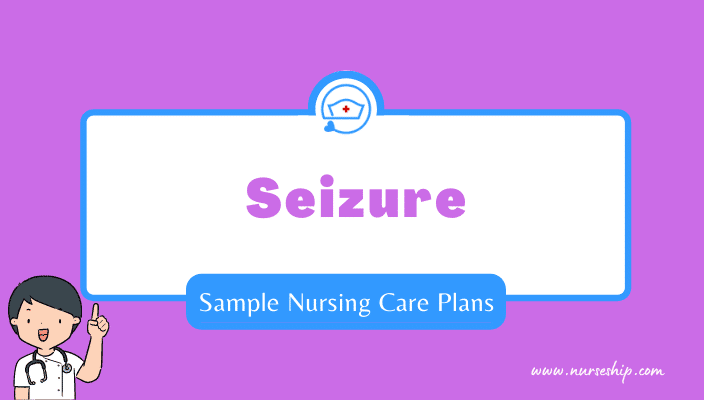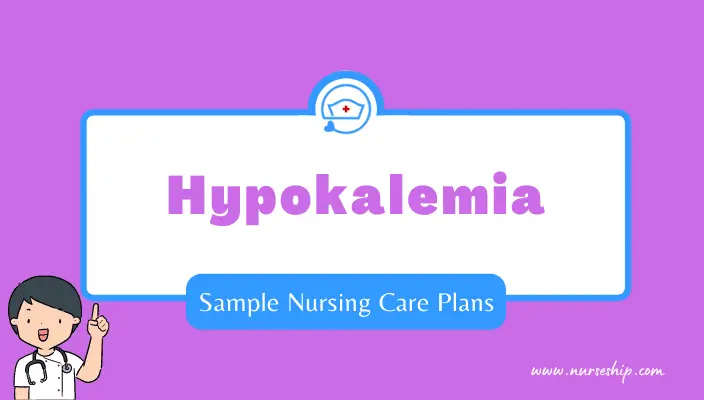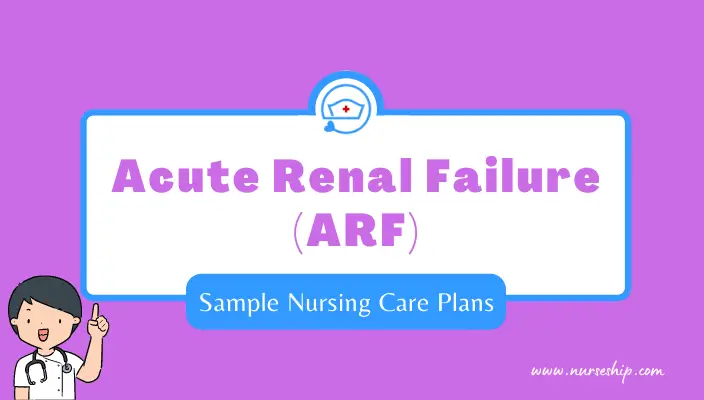Here we will formulate sample seizure nursing care plans based on a hypothetical case scenario.
It will include three seizure nursing care plans with NANDA nursing diagnoses, nursing assessment, expected outcome, and nursing interventions with rationales.
Seizure Case Scenario
A 22-year old female presents to the ED with complaints of confusion and “feeling strange.” The patient is accompanied by a friend who witnessed the patient having a seizure. The friend reports they were at a concert when the patient started feeling unwell and subsequently collapsed and had a seizure. The friend called for help and turned the patient on her side. After being turned to the side the patient vomited. In total, the seizure lasted for about 2 minutes. The patient’s friend confirms there were flashing lights at the concert, and also admits they both took an unknown pill.
Upon assessment, the patient is lethargic and confused, oriented to person and place but disoriented regarding time, and situation. The patient has no recollection of the seizure and states “why did this happen to me?” The patient’s speech is slightly slurred but her neurological assessment is otherwise normal. Her temperature is 37.5 C, heart rate is 103 BPM, blood pressure is 115/76 mmHg, respirations 21 breaths/min, and oxygen saturation is 88% on room air. The nurse places the patient on 2L oxygen via nasal cannula. Upon auscultation, the patient’s lung sounds are coarse throughout.
The patient’s blood work reveals low sodium of 125 mEq/L and a blood alcohol level of 0.10% (100 mg/dL). A urine toxicology screen is performed and is positive for ecstasy. The patient is taken for a head CT which is negative for any acute process. A chest x-ray reveals infiltrates. The patient is subsequently placed on continuous EEG.
The patient is admitted to the hospital for Seizures.
#1 Seizure Nursing Care – Ineffective airway clearance
Seizure Nursing Assessment
Subjective Data:
- The patient’s friend said the patient vomited during the seizure
Objective Data:
- The patient’s oxygen saturation is low
- The patient’s lung sounds are coarse
- The chest x-ray reveals infiltrates
Nursing Diagnosis
Ineffective airway clearance related to inability to manage secretions secondary to seizures as evidenced by low SPO2 and coarse lung sounds
Goal/Desired Outcome
Short-term goal: The patient will be weaned off oxygen by the end of the shift
Long-term goal: The patient will take the prescribed course of antibiotics and the family will state the importance of turning the patient on the side in the event of a seizure
Seizure Nursing Interventions with Rationales – Ineffective airway clearance
| Nursing Interventions | Rationales |
| Educate the patient and family to place the patient on the side or turn the head in the event of a seizure | Turning to the side prevents aspiration during a seizure |
| Suction the patient as needed | Suction should be readily available for a patient at risk for seizures. Suctioning the airway can prevent the aspiration of saliva or stomach contents |
| Use a bite block if needed to maintain airway patency | A bite block can keep the airway open in the event of a seizure. A bite block should only be inserted if the jaw is relaxed and should never be forced into the patient’s mouth |
| Stay with the patient for the duration of the seizure | This promotes patient safety |
| Provide oxygen as needed | After aspiration, patients may require oxygen |
| Monitor for signs and symptoms of aspiration | Coarse lung sounds, decreased SPO2, infiltrates on chest x-ray, and elevated WBCs are a few symptoms of aspiration and aspiration pneumonia |
#2 Seizure Nursing Care – Risk for injury
Seizure Nursing Assessment
Subjective Data:
- The patient’s friend reports the patient collapsed and had a seizure
Objective Data:
- The patient’s sodium is critically low
- The patient is positive for alcohol and ecstasy
Nursing Diagnosis
Risk for injury related to loss of muscular control secondary to seizures as evidenced by loss of consciousness and subsequent fall
Goal/Desired Outcome
Short-term goal: For the duration of the shift the patient will remain safe, free from injuries, and have no further seizure activity
Long-term goal: The patient will enact appropriate safety strategies to prevent injury from seizures
Seizure Nursing Interventions with Rationales – Risk for injury
| Nursing Interventions | Rationales |
| While in the hospital, pad the side rails and place floor pads | If a seizure occurs, injuries from involuntary movements or falls will be minimized |
| Perform a fall risk evaluation and enact the appropriate precautions | Placing a fall risk wristband or instructing the patient to call for help before getting out of bed can decrease the incidence of falls |
| If applicable, assess if the patient could benefit from a protective helmet | If seizures are uncontrolled a helmet is recommended to prevent head injuries from falls |
| Monitor vital signs during and after a seizure | The patient may require oxygen or other medical support during a seizure |
| Monitor for status epilepticus | Status epilepticus is a rapid series of seizures that can lead to serious injury or death if the seizure is not terminated |
#3 Seizure Nursing Care – Deficient knowledge
Seizure Nursing Assessment
Subjective Data:
- The patient states “why did this happen to me?”
Objective Data:
- The patient is positive for alcohol and ecstasy
Nursing Diagnosis
Deficient knowledge related to newly diagnosed seizure disorder as evidenced by consumption of alcohol and drugs and verbalization of “why did this happen to me?”
Goal/Desired Outcome
Short-term goal: By the end of the shift the patient will be able to list a few factors that contribute to seizure activity
Long-term goal: The patient will demonstrate behaviors to prevent future seizures
Seizure Nursing Interventions with Rationales – Deficient knowledge
| Nursing Interventions | Rationales |
| Administer medications and educate the patient about the purpose and side effects | Antiepileptics (AEDs) – these drugs reduce the excitability of the neurons, reducing the likelihood of seizures e.g. phenytoin, valproic acidBenzodiazepines inhibit a neurotransmitter called GABA e.g. lorazepam, valiumBarbiturates affect the duration of the opening of chloride channels e.g. phenobarbital |
| Educate the client about the ketogenic diet | The ketogenic diet is a high fat, low carbohydrate diet that can improve seizure control |
| If seizure control cannot be achieved with medications, educate the patient about surgical options | Depending on the type of seizure disorder and the location of the seizures in the brain, surgery may be recommended. Surgical options include a lobectomy, corpus callosotomy, hemispherectomy, or thermal ablation. Electrical stimulation may also help with seizure control, such as the implantation of a vagus nerve stimulator, or a deep-brain stimulator. |
| Educate the patient about stimuli that can cause seizures | Flashing lights, alcohol, drugs, and video games can all increase the risk of seizures |
| Educate the patient about auras | Being able to identify an aura is helpful because it can warn the patient of an impending seizure and provides time to move to a safe environment. Examples of auras are a feeling of deja vu, fear, blurry vision, numbness or tingling, headache, etc. |
Conclusion
To conclude, we created scenario-based 3 sample nursing care plans for seizures. These nursing care plans include nursing assessment, NANDA nursing diagnosis, expected outcome, and nursing interventions with rationales for seizures.
Reference
Ackley, B., Ladwig, G., Makic, M., Martinez-Kratz, M., & Zanotti, M. (2020). Nursing Diagnoses Handbook: An Evidence-based Guide to Planning Care (12th ed.). Elsevier.
Herdman, T., Kamitsuru, S. & Lopes, C. (2021). NURSING DIAGNOSES: Definitions and Classifications 2021-2023 (12th ed.). Thieme.
Swearingen, P. (2016). ALL-IN-ONE CARE PLANNING RESOURCE (4th ed.). Elsevier/Mosby.




